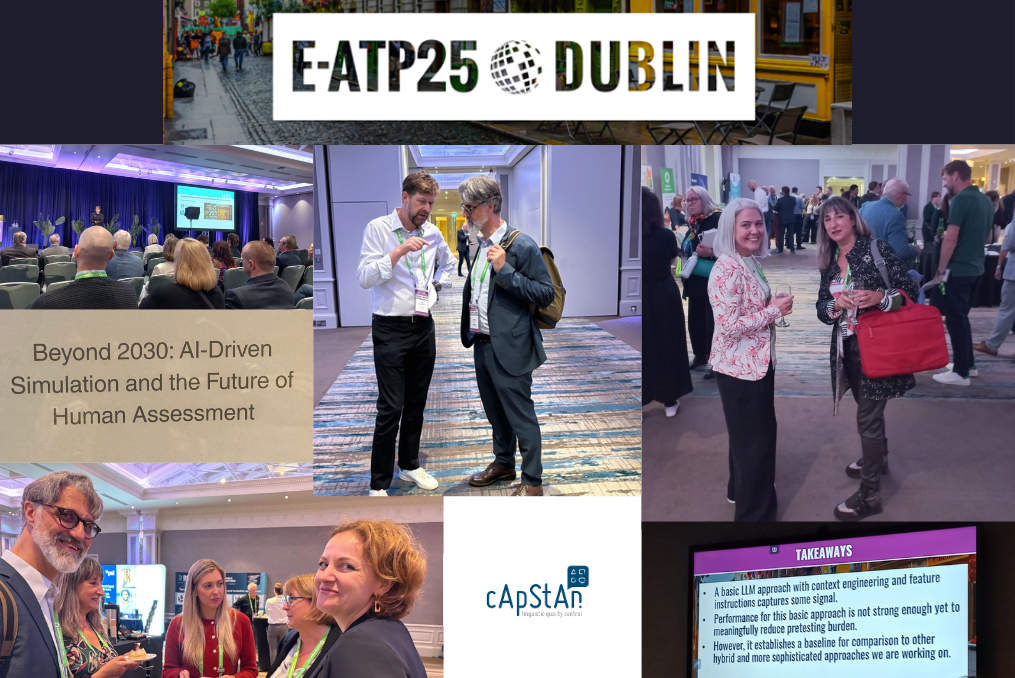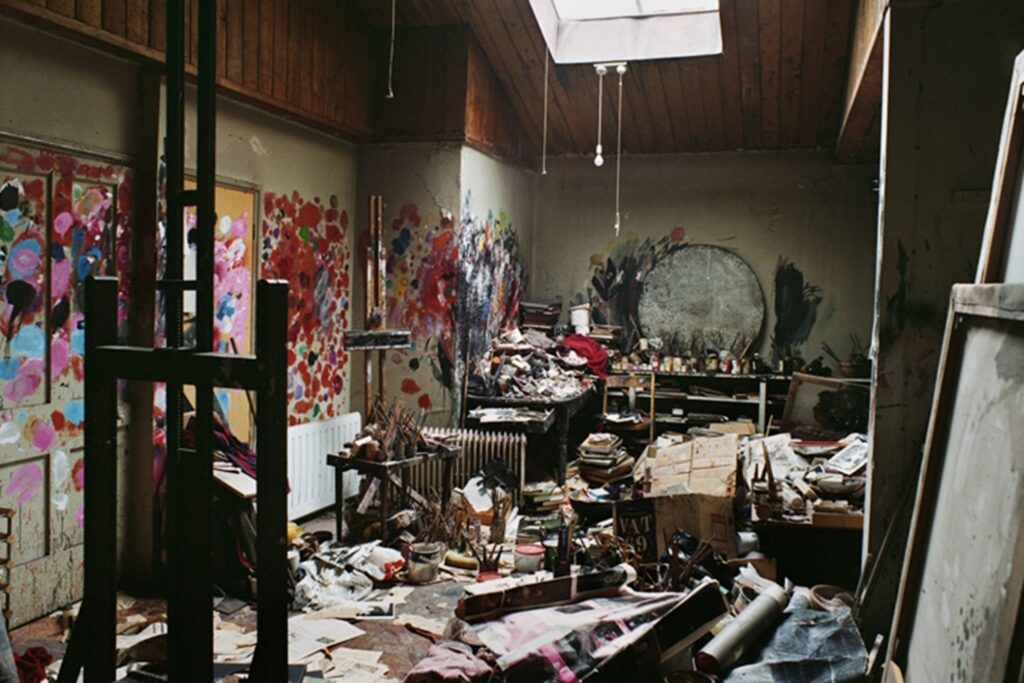
E-ATP25 Conference, Dublin | Building European Assessment for All
The European arm of the Association of Test Publishers (E-ATP) held its annual conference in Dublin this year. The venue was ideal, the turnout was better than in 2024, though the proportion of vendors, and the content was definitely engaging.
One takeaway for the cApStAn team was that the assessment localisation challenge has shifted towards interoperability, seamless handling of complex item types and formats, and workflow automation. It was great for our CTO Laura Casanellas and founding partner Steve Dept to observe that our core capabilities are in such high demand.
Both had arrived just in time for the opening keynote by Prof. Mary Richardson: Testing Boundaries: Assessment Futures (and Education For The Moment) was highly relevant for the industry: Prof. Richardson used data to make her points rather than inspirational quotes, and she relegated AI to its proper place: an important new tool rather than a revolution that will end education as we know it. It was uplifting to see claims backed up with data from TIMSS, PIRLS and PISA, three of the international large scale assessments on which we have been working for decades and counting.
The catering was outstanding and served in the exhibition hall, where the assessment platforms, online proctoring, e-learning content and software developers showcased their newest products and services. The space was vast, and it was easy to spot the people with whom we had appointments: networking at its best, also because the breaks were long enough to allow conversations beyond small talk.
Laura and Steve attended sessions on inclusivity (Constructing Inclusivity: Rethinking Language Constructs in Assessment by Ananda Senel and Lucy Gibbs gave us food for thought), and on AI, of course, but this time we noticed that there not only stories of success and promise, but also honest reports of failures or unsatisfactory results. We may learn as much, if not more, from projects that yielded somewhat disappointing results than from unsubstantiated claims of unrealistic efficiency gains. Special thanks to those presenters who shared their concerns about going all in on generative AI. During the breaks, they tried to catch up with our clients and partners and also to engage with people, organisations and stakeholders from European countries.
In Ireland, the happy hour is bound to be boisterous: it was more than an hour and the exchanges were particularly lively. Open bar for the camaraderie of the assessment microcosm, which is in a league of its own.
On the second day, the morning sessions were well attended, which speaks for Guinness as well as for the interest and modification of the conference delegates. At 8:45 a.m., “Tackling Item Performance Prediction: Applications of AI”, by Brad Bolender, was another example of a candid account of trial and error: one of the conclusions was that, while there is potential in automated prediction of item performance, the outliers that are closer to the end points of the scale continue to pose a challenge. After a full day of sessions and networking, good laughs and serious questions, too much coffee and healthy scepticism, Steve and Laura presented “Executive Development in European Corporate Settings: A Case Study” during the last time slot for breakout sessions. The presentation ended in the form of an interactive discussion with the audience, who clearly wanted to understand how AI-driven localisation workflows work and at what point in those workflows the human expertise adds the most value.
Also on the third day, morning sessions were really well-attended – and the closing panel “Are We Future-Ready? Rethinking Skills For Tomorrow’s Workforce” focused on what it takes to maintain momentum for lifelong learning (but also to be aware of the environmental and ethical hazards associated with over-reliance on generative AI).
It was grand, as they say in Dublin.
As a bonus, we visited the Oscar Wilde House, the MoLI (Museum of Literature Ireland), and a reconstitution of Francis Bacon’s studio at the Hugh Lane Gallery (illustration below, credit to Perry Ogden, 1998), where we could also see some of his unfinished works.
